

The first group of Egan's artwork showcased here came from an exhibit at the Valencia Fine Arts Gallery at the University of New Mexico. The theme was "We Waste Ourselves". The idea came to him after reading this quote by Alice Broche: "We say we waste time, but that's impossible. We waste ourselves." The poster on the right was used to promote his exhibit. It features a drawing he did called "Wasted Life" which contains imagery that shows how people may be wasting themselves. This drawing has a companion drawing that shows the opposite - a life that is not wasted. He calls it "Life Not Wasted". Before he drew "Wasted Life" and "Life Not Wasted," he created a sculpture he now calls "Our Lady of Wasted Selves" shown in the right image.
|
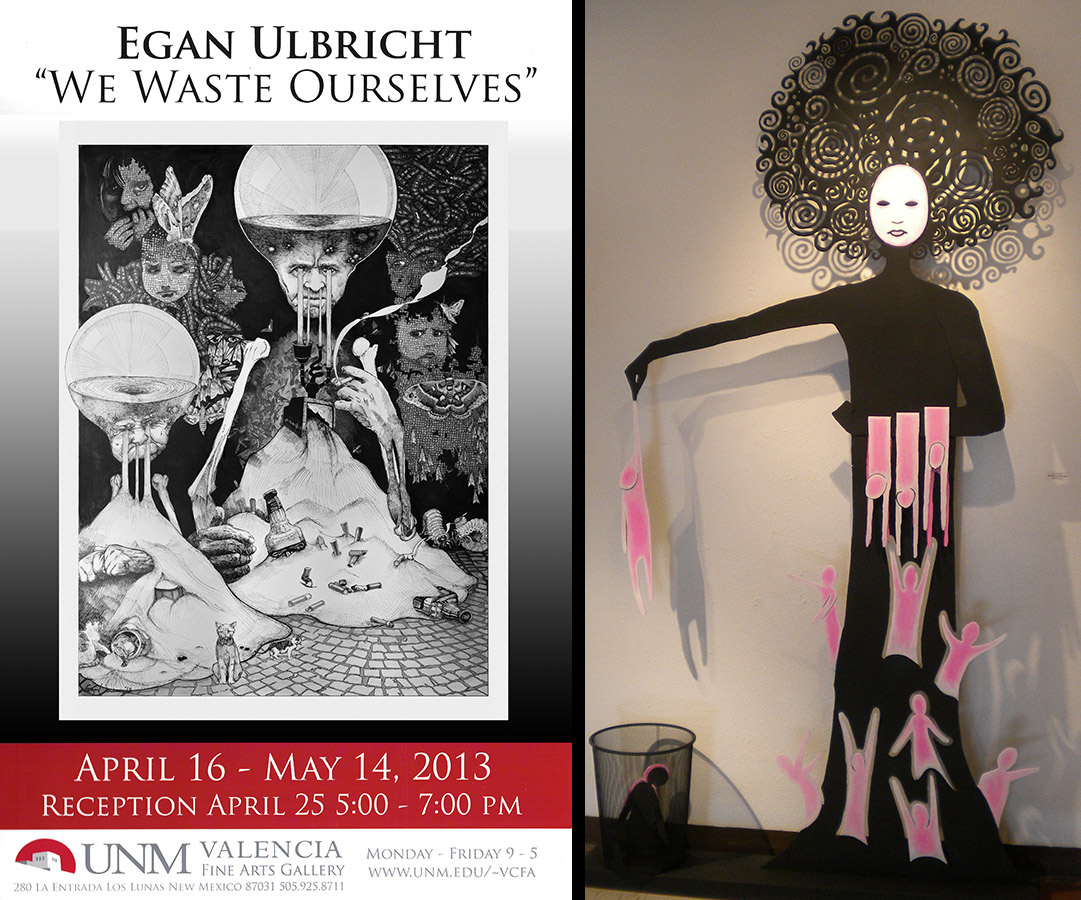 |
"Wasted Life" vs "Life Not Wasted" |
|
| The below companion drawings contrast the lives that are wasted and lives that are not wasted. In both drawings the heads of people are hourglasses whose sand represents their remaining lifespan. Just like an hourglass, sand falls as time passes. How these "sands of time" are used determines how productive or wasteful their lives are. On the left in the "Wasted Life" drawing, we see some obvious habits that can waste time and ourselves such as smoking, drinking, and excessive watching of television. On the right in the "Life Not Wasted" drawing, we see symbols of growth, creativity, adventure, and learning. One interesting difference is the use of moths in the left drawing and the use of butterflies in the right drawing. Butterflies are symbolic of beauty, color, and life. Moths are a dull gray and looked upon as pests because they eat fabric. Egan uses moths to represent the eating away of the fabric of life that the hourglass people once had. Below are closeups of these drawings plus more insight to their meanings. | |
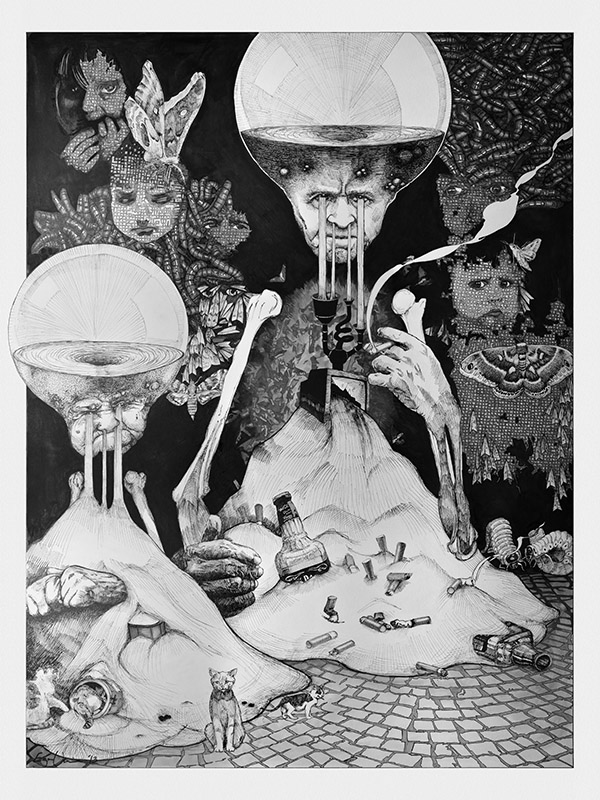 |
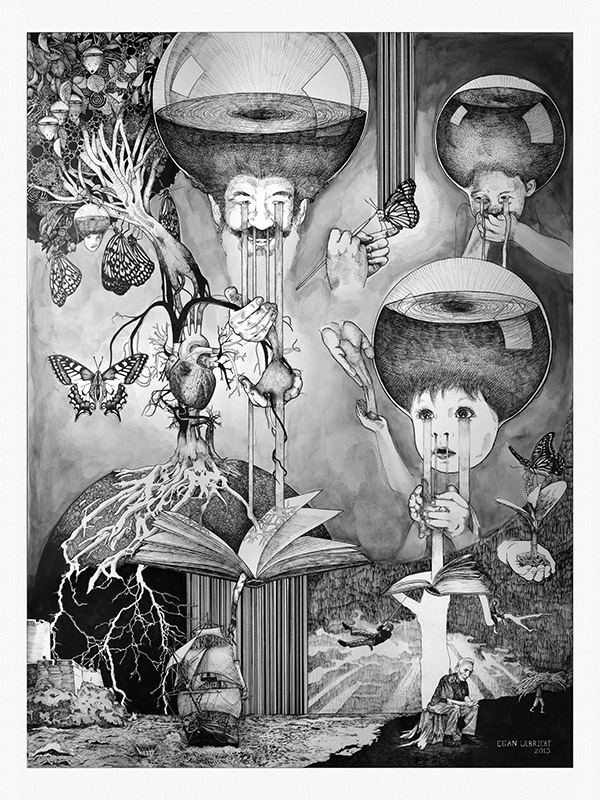 |
"Wasted Life" by Egan Ulbricht / 2013 / Pen & Ink |
|
|
This artwork was chosen for the poster because it best conveys the "We Waste Ourselves" message of the exhibit. It was created with ink. The original is 30 inches by 40 inches. Like its companion drawing, "Life Not Wasted", this work also has about a quarter of a millions ink strokes. So its creation was also meticulous. Click the radio buttons to see a detailed view of certain areas. Also, read the comment for that area.
|
|
Full view |
Detail view |
 |
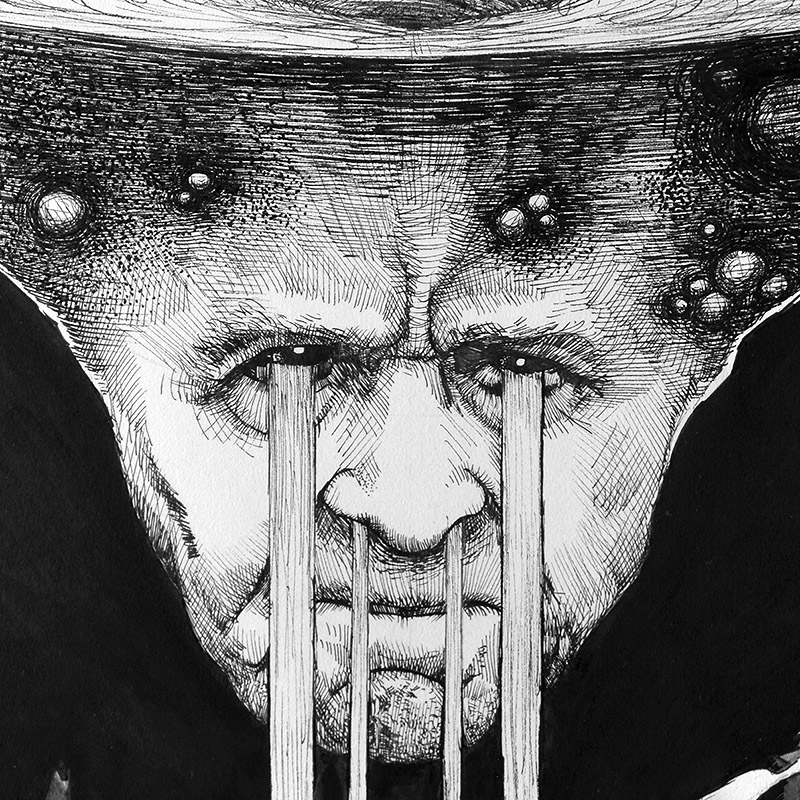 |
"Life Not Wasted" by Egan Ulbricht |
Close up showing detail. |
 |
 |
"We Do Not Waste Time; We Waste Ourselves" by Egan Ulbricht
/ 2013 /Pen & Ink |
This colorful artwork carries on the same theme as the other pieces created for this exhibition. The hourglass and moth symbolism is seen again. As you can see Egan meticulously drew many images for this ink and watercolor painting. In addition to the message of wasting ourselves, you will see Egan expands that to wasting our country and our world. Even though the subject matter is somewhat gloomy, Egan's natural tendency to be whimsical and humorous comes through in parts of this painting making you smile despite the serious message. For example, you will see imagery inspired by Hindu gods and the Hobbits.
The original is 27" x 40". High resolution scanning of the image allows great looking 40" x 60" prints. Like his other art, it looks good from a distance or up close. Below are radio buttons that let you explore all of the interesting aspects of this painting.
|
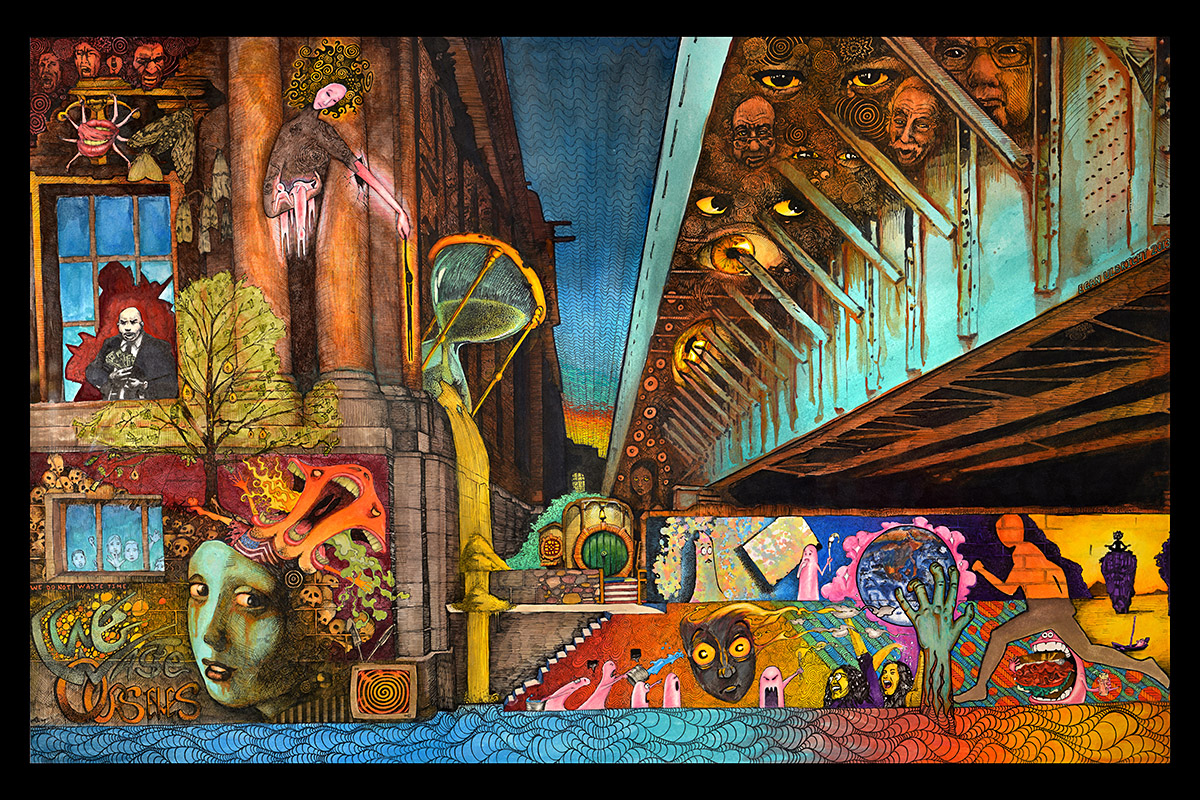 |
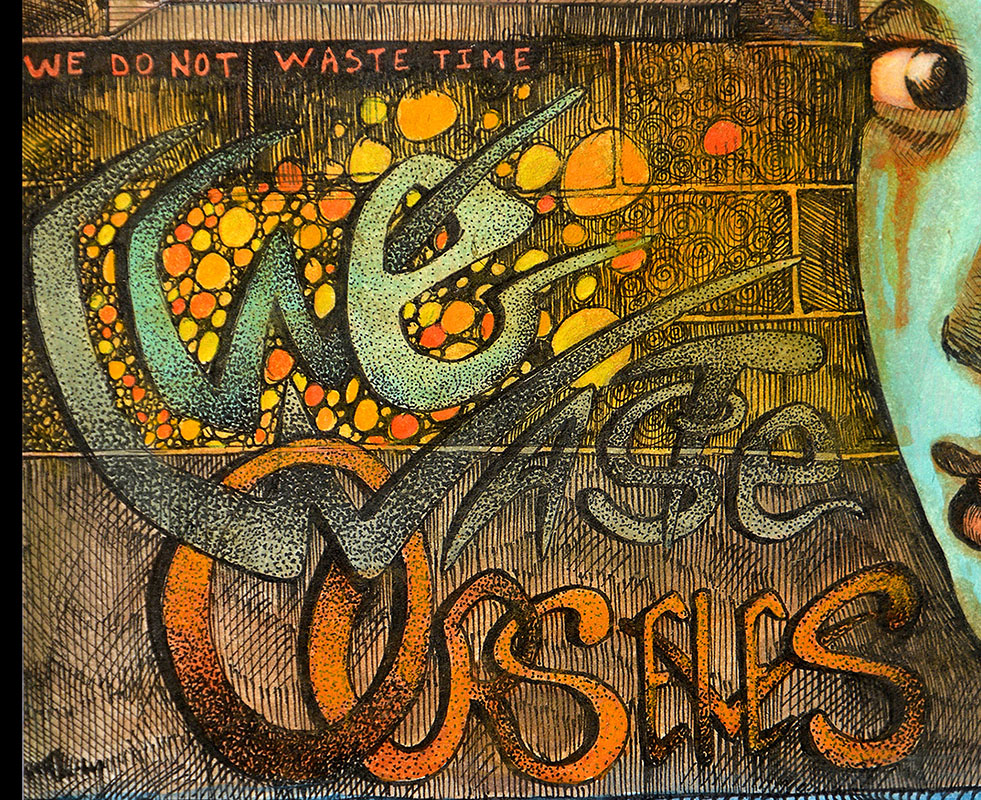 |
"Pull of the Bosque" by Egan Ulbricht/ 2017 /Acrylic / 36"x48" |
The way this painting was painted is rather unique. First Egan painted it in a traditional manner with brushes, but later he meticulously masked off most of the painting except for the sky and water. He then used spray paint to redo the sky and water so that the gradations of color would be extremely smooth. This adds higher realism to both sky and water. |
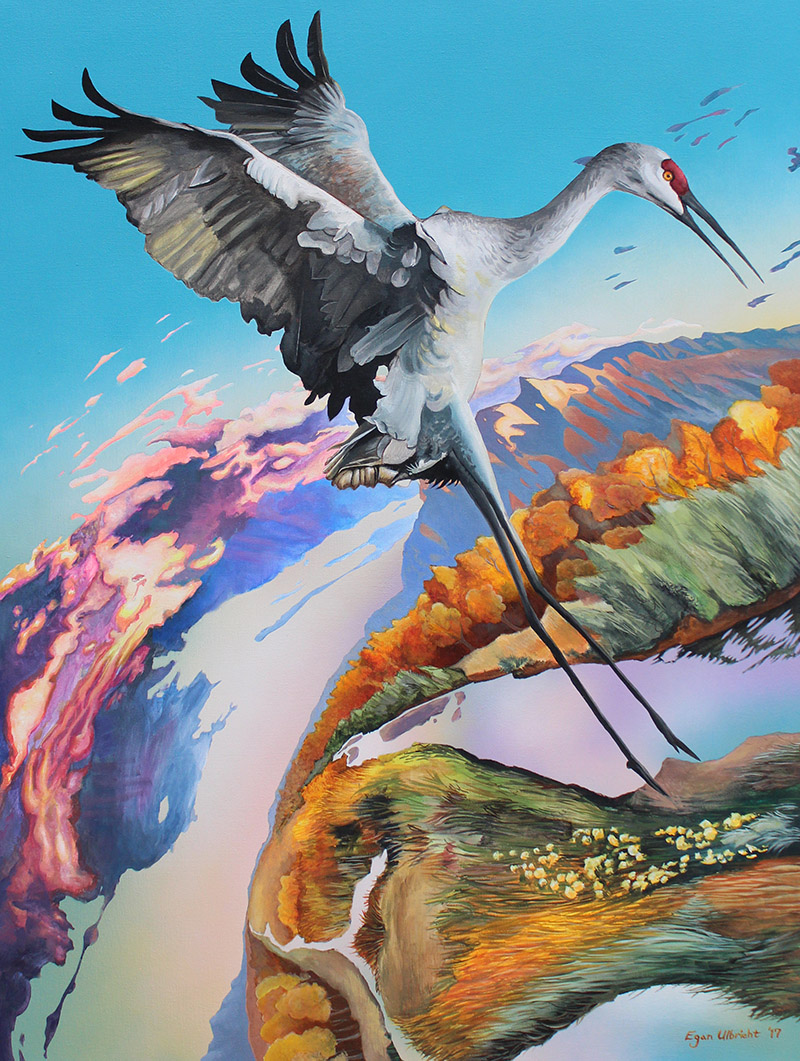 |
"Bosque" is referring the Bosque del Apache National Wildlife Refuge. The U.S. Fish and Wildlife Service makes this description: "Established in 1939 to provide a critical stopover for migrating waterfowl, the refuge is well known for the thousands of sandhill cranes, geese and other waterfowl that winter here each year." The painting's title refers to the pull or attraction of this refuge to cranes that migrate through the area. In the painting, the landscape below is bent to emphasize the curvature of the Earth and hint to the long migration these cranes make from Canada to Mexico. |
"Crane Selfie" by Egan Ulbricht / 2016 / Acrylic / 30" x 48" |
Every year photographers arrive in the hundreds to photograph the sandhill cranes that fly into the Bosque del Apache National Wildlife Refuge. In keeping up with modern trends, Egan thought it would be appropriate that the cranes could now take a photo of themselves with a standard selfie. You can imagine the crane on the right holding a smartphone and taking a selfie of himself and his friends. |
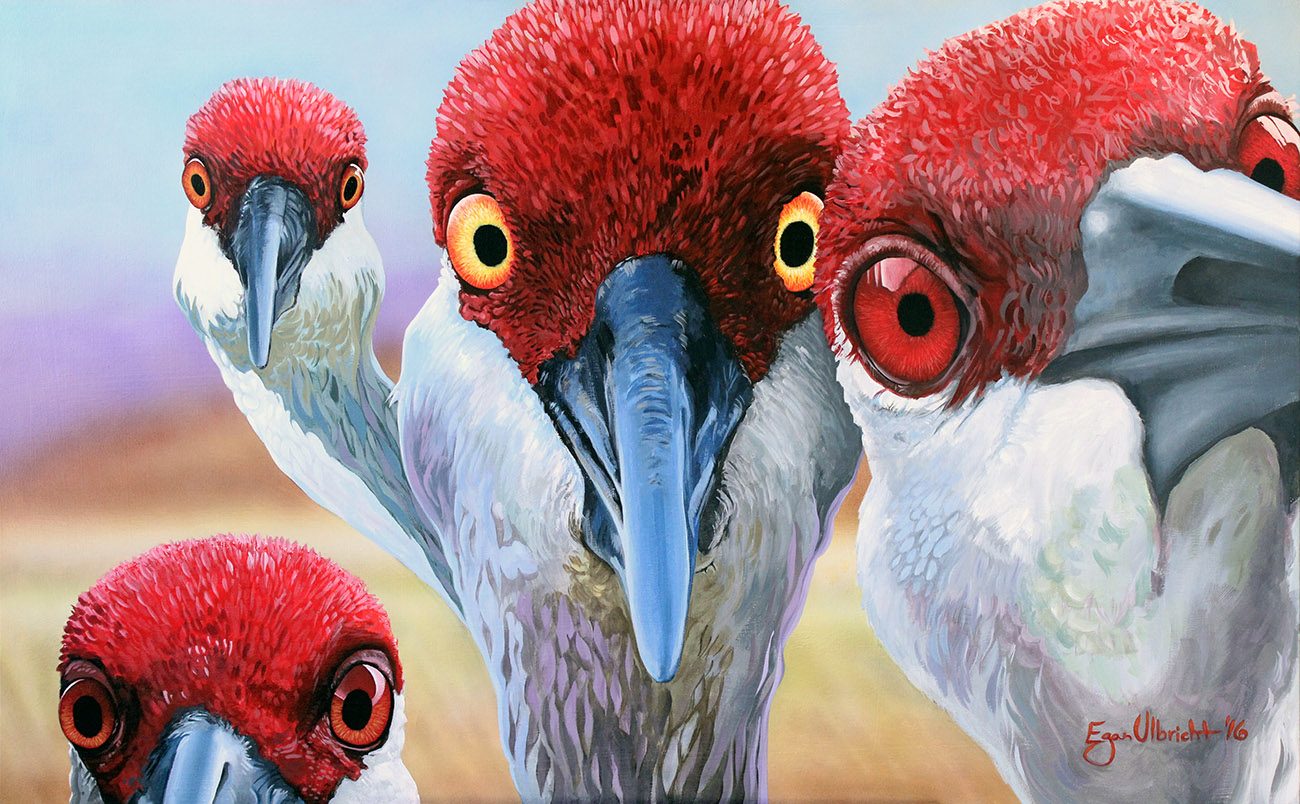 |
As you might guess, this painting is one of the favorites of folks who enjoy the migration of the cranes and the photos taken of them. |
"Dancing Cranes" by Egan Ulbricht / 2016 / Ink / 12" x 18" |
Every year sandhill cranes fly into the Bosque del Apache National Wildlife Refuge near where Egan grew up. Here is a painting of two cranes taking flight. He originally wanted to mimic the style that Chinese artists had painted cranes over the centuries. However, his preference for using vibrant colors created a fresh interpretation of that ancient style. |
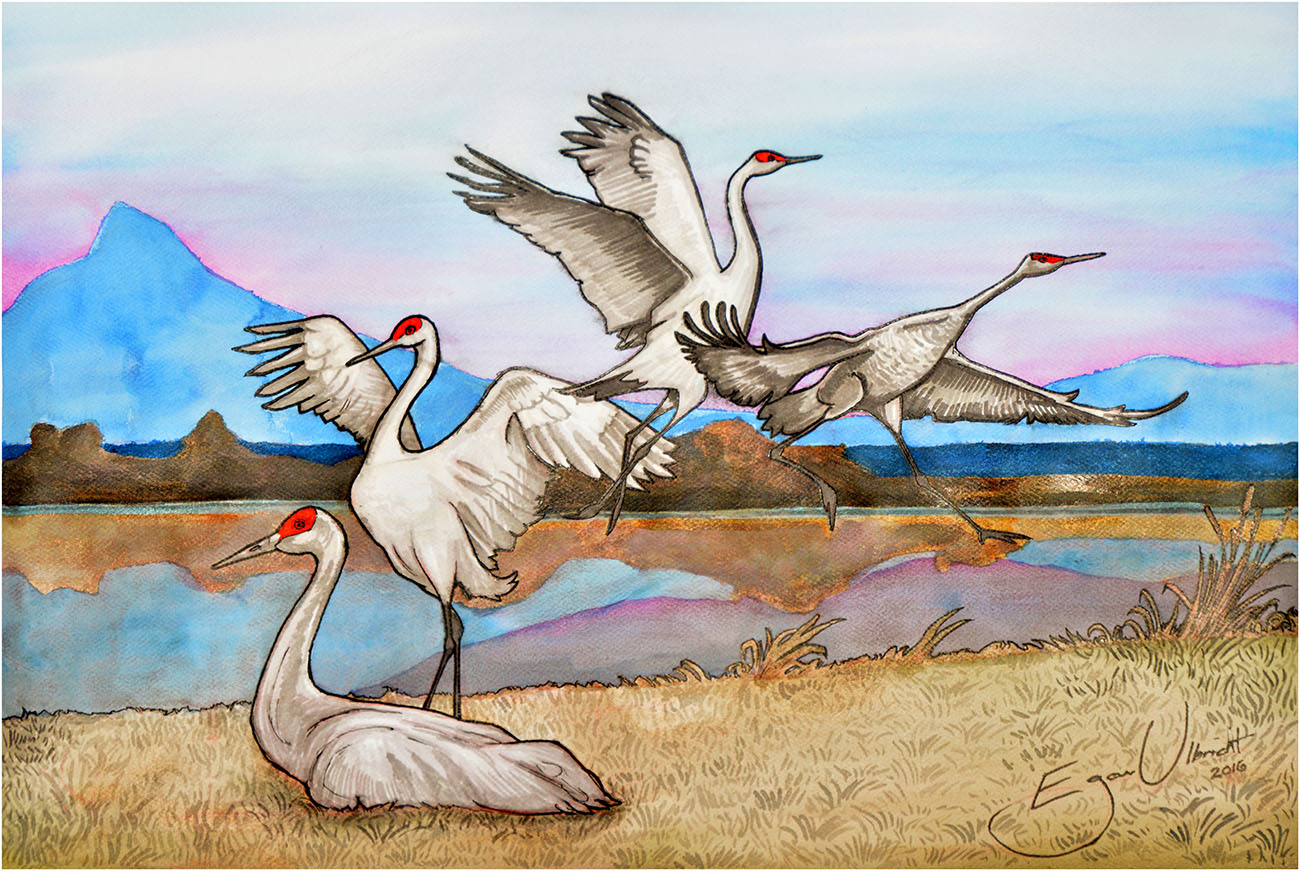 |
"Sunset Cranes" by Egan Ulbricht / 2016 / Ink / 12" x 18" |
Here is a painting of cranes flying at sunset. As mentioned in the painting above, Egan originally wanted to mimic the style that Chinese artists had painted cranes. That style usually had muted colors. However, Egan's preference for vibrant colors created a very colorful version of that ancient style. |
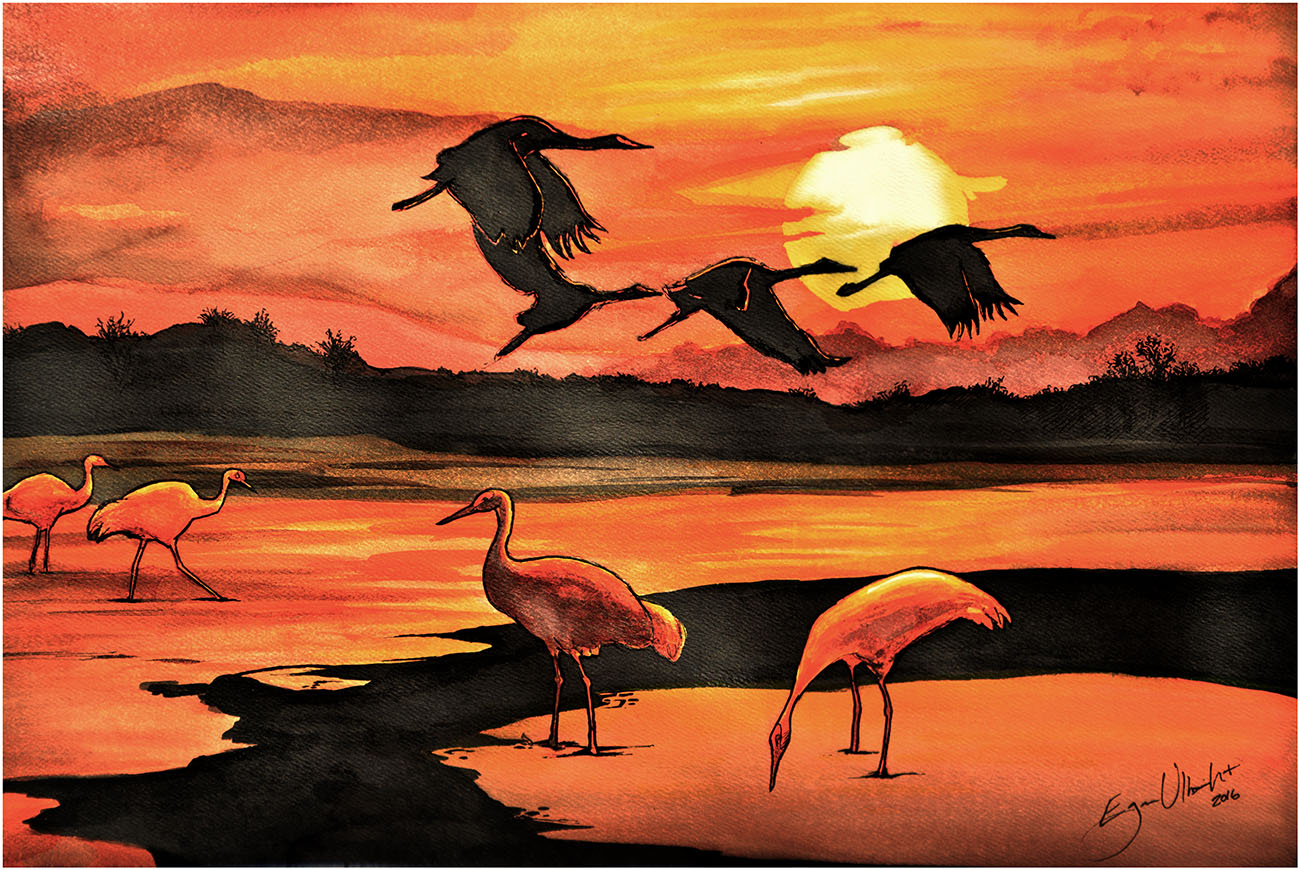 |